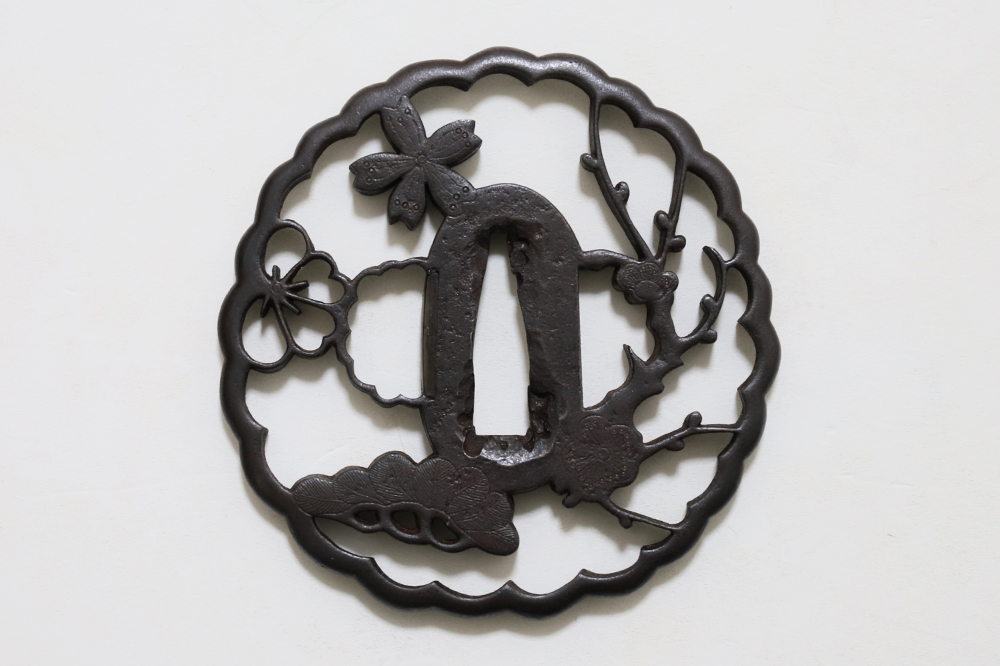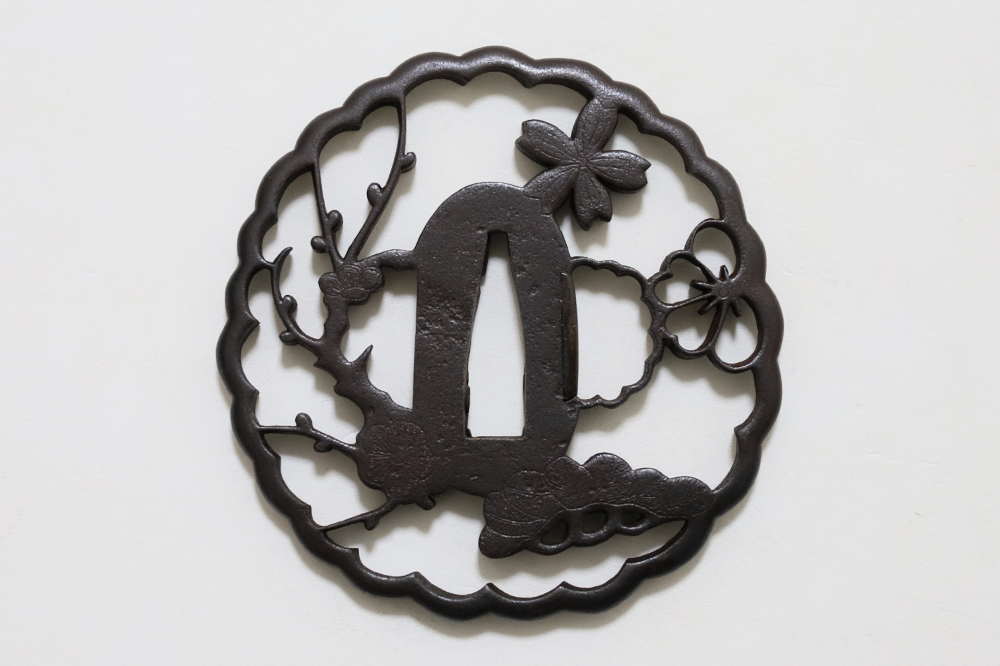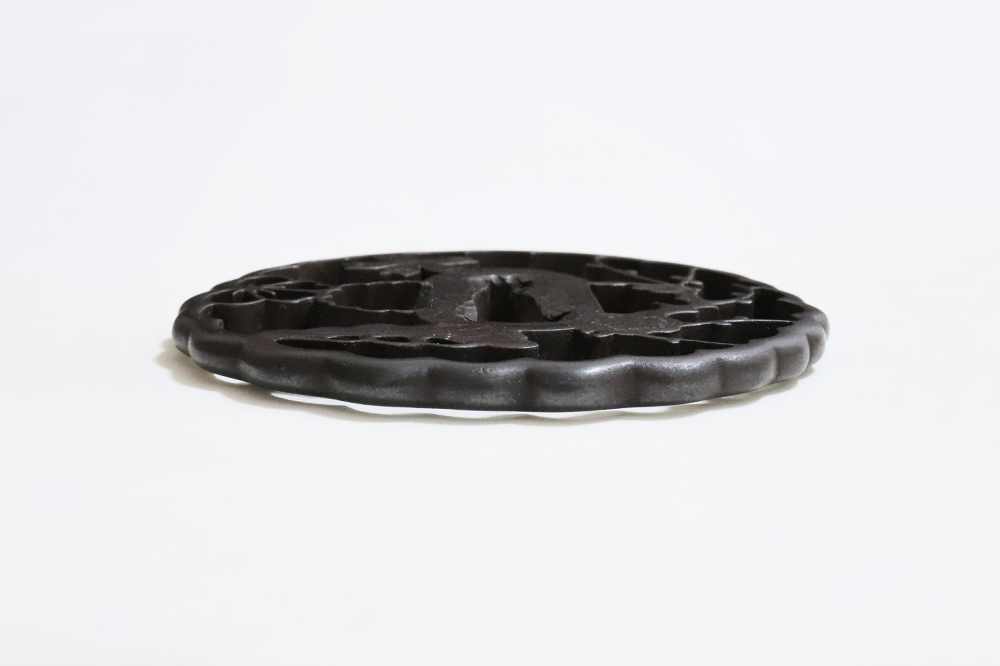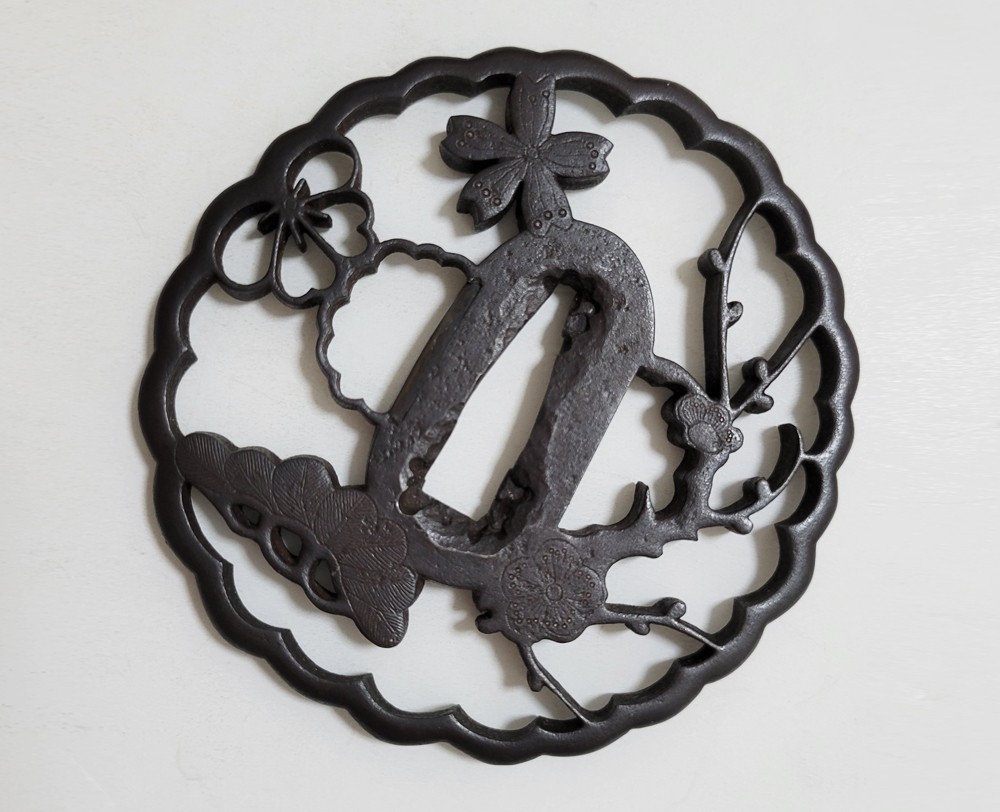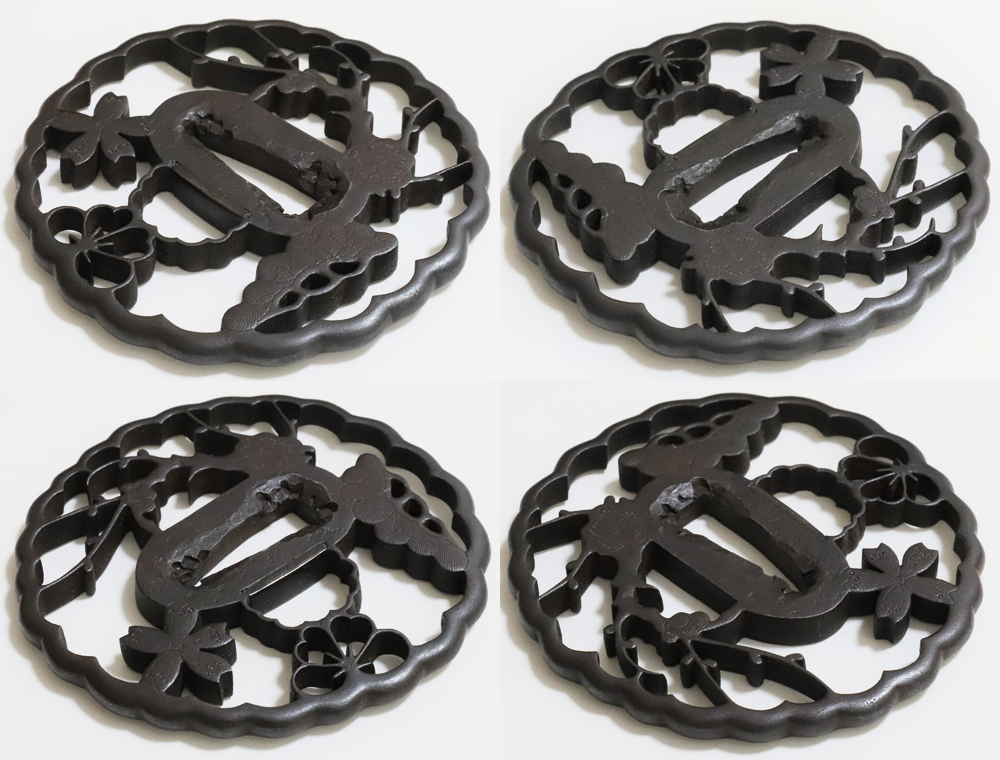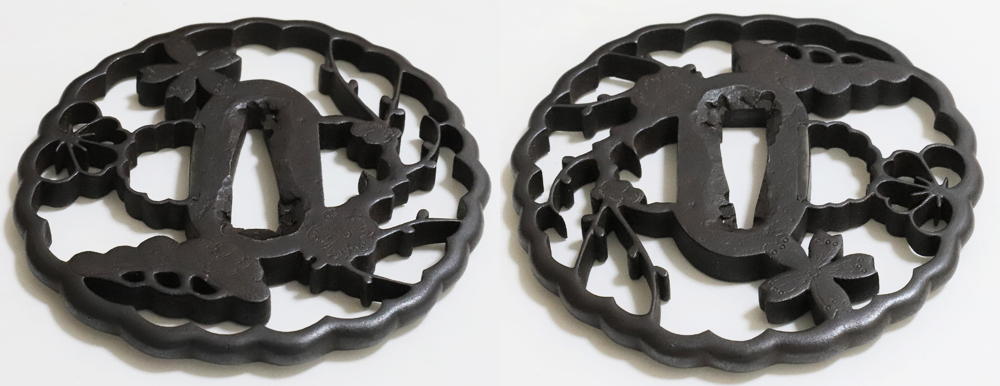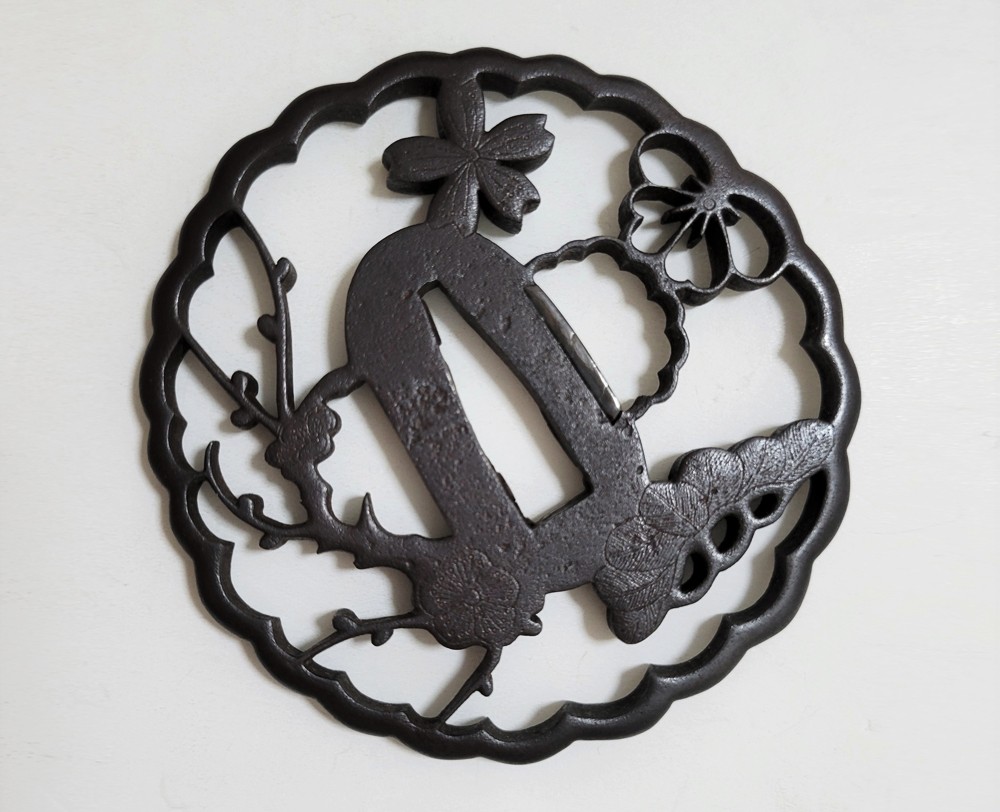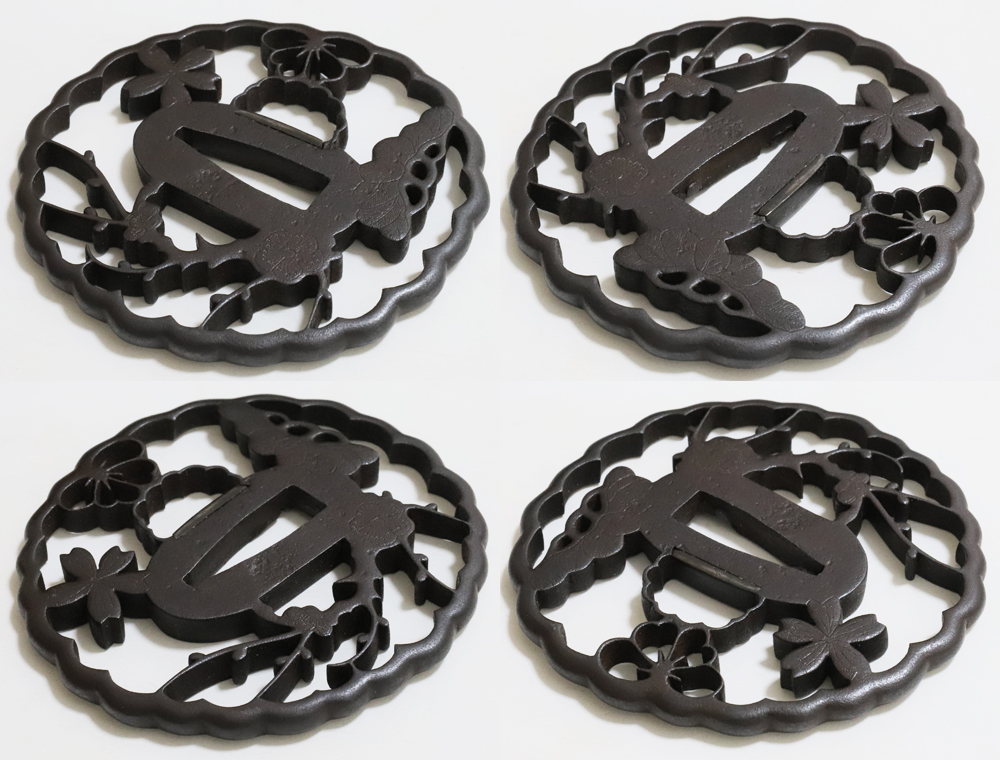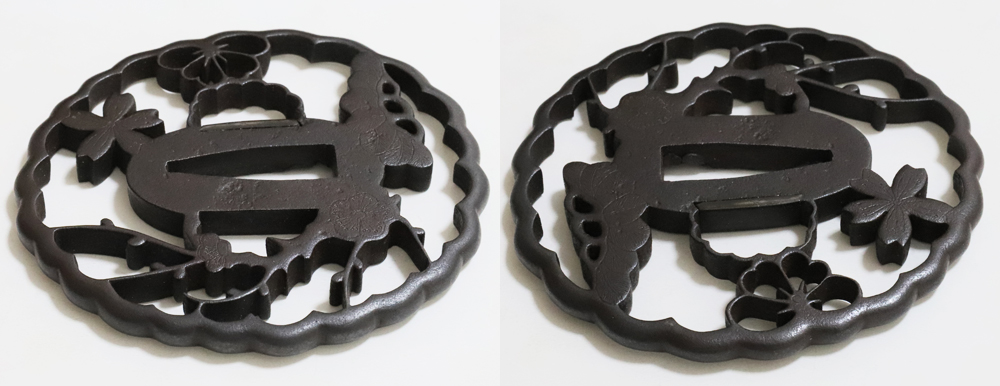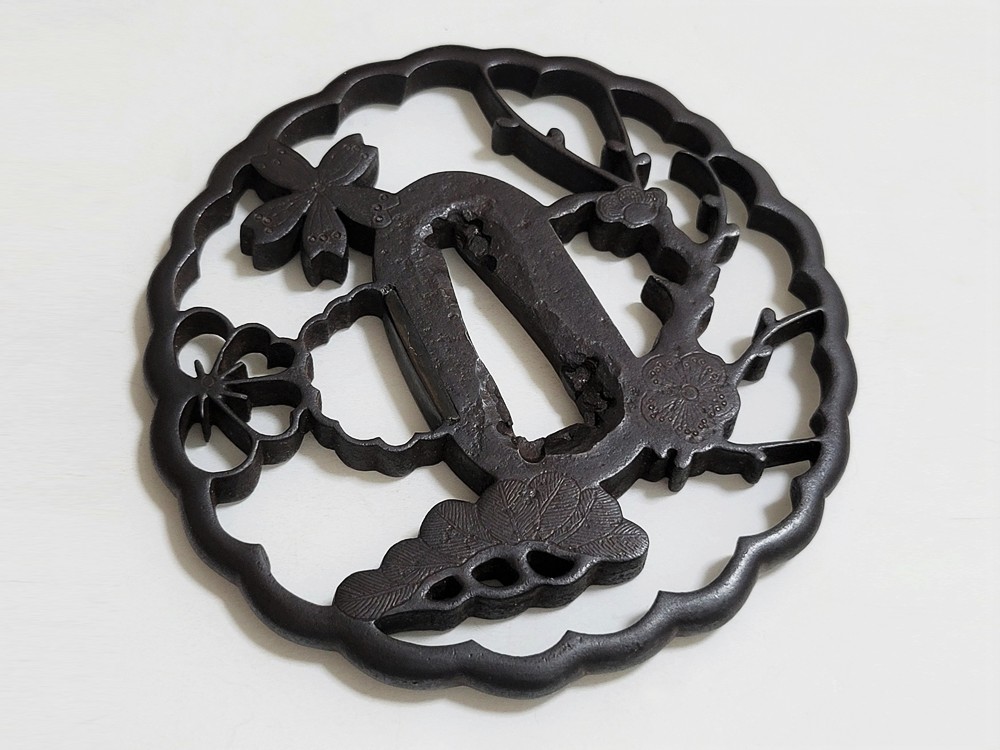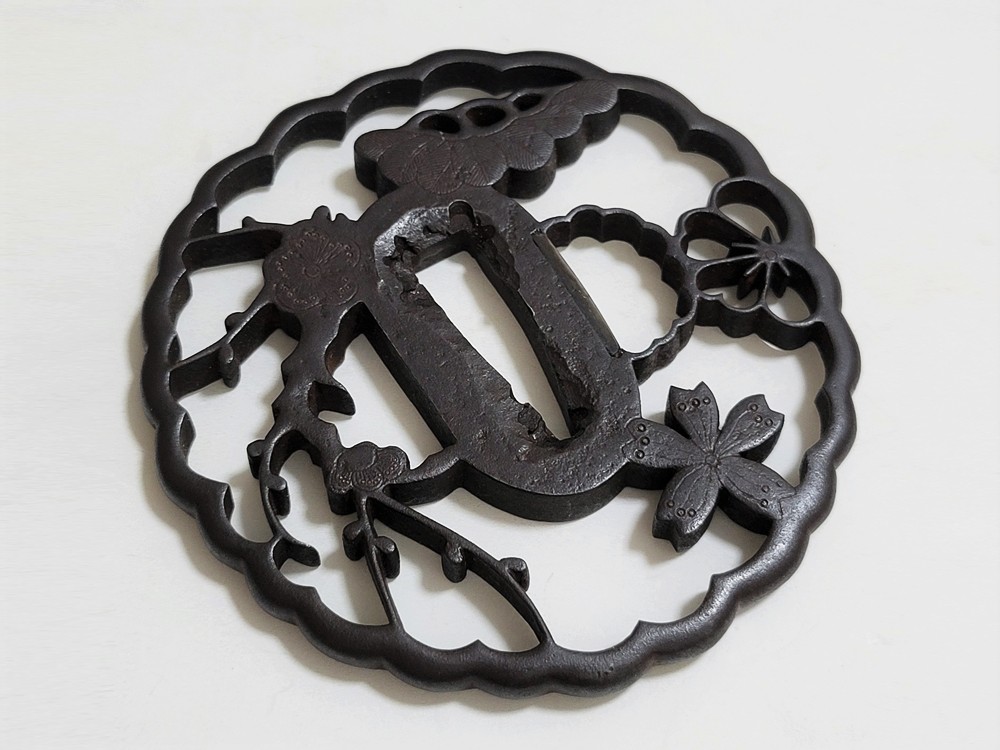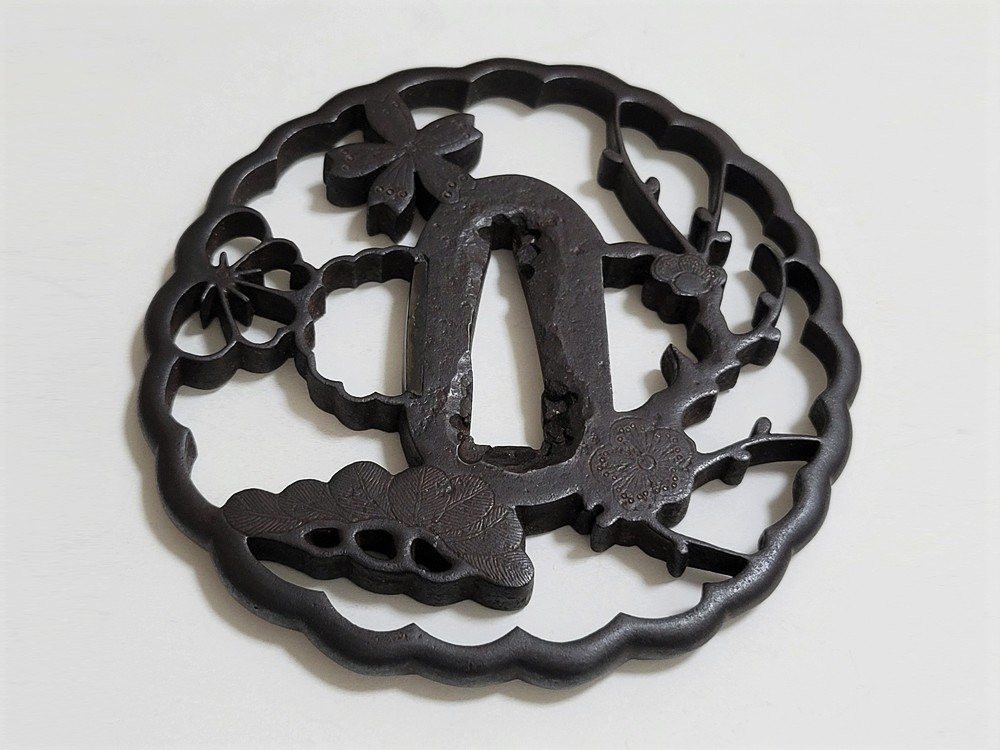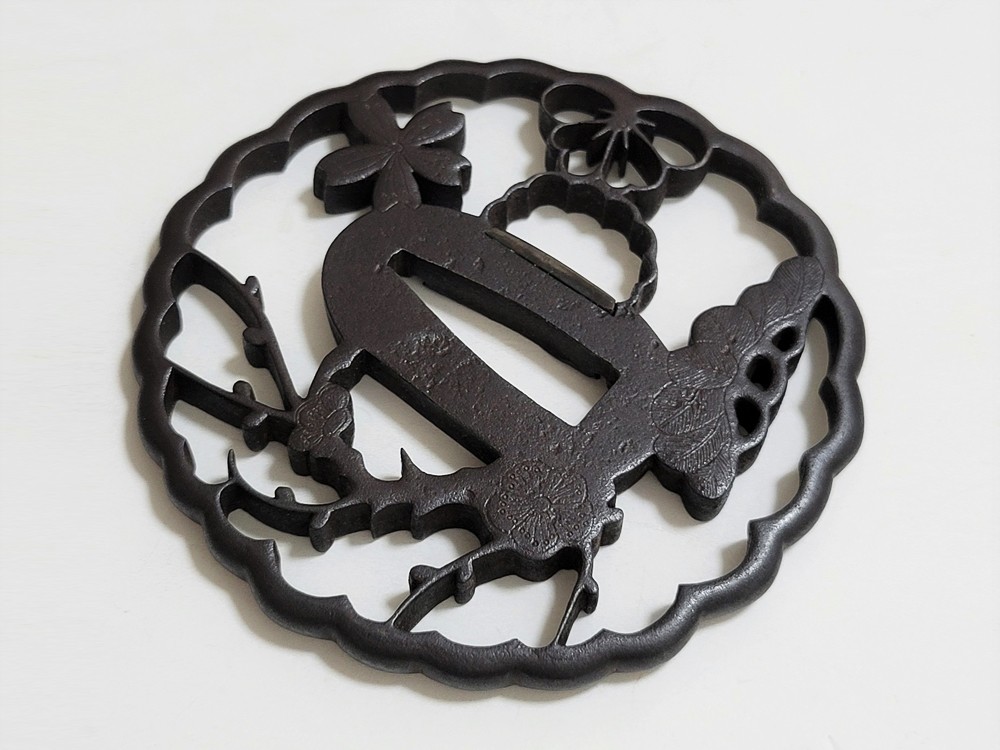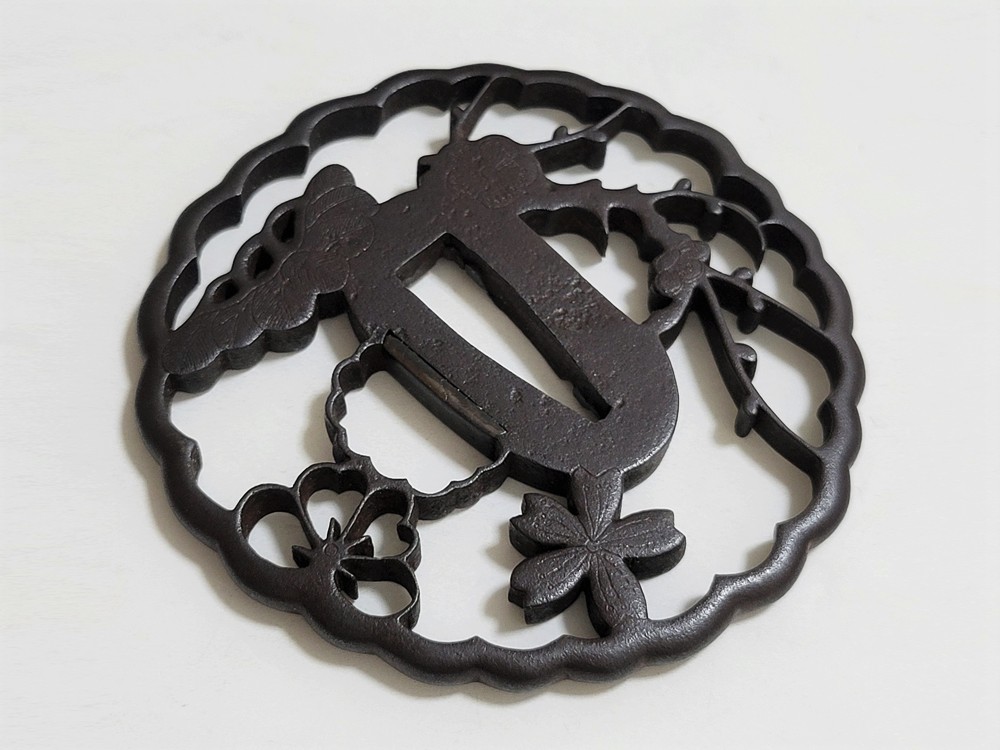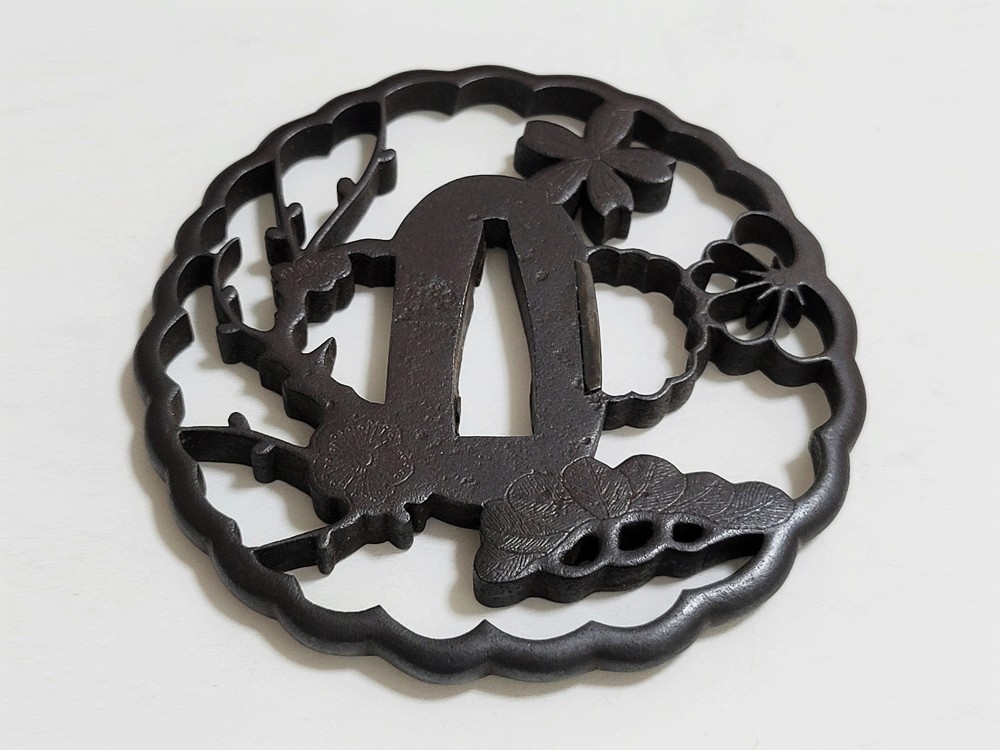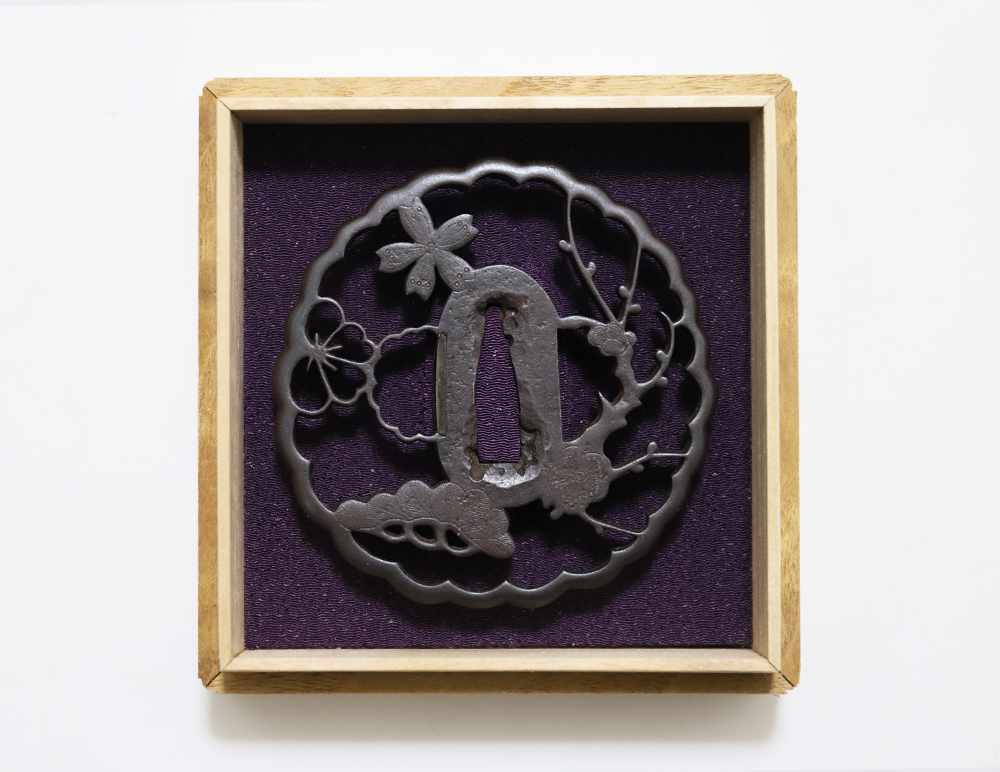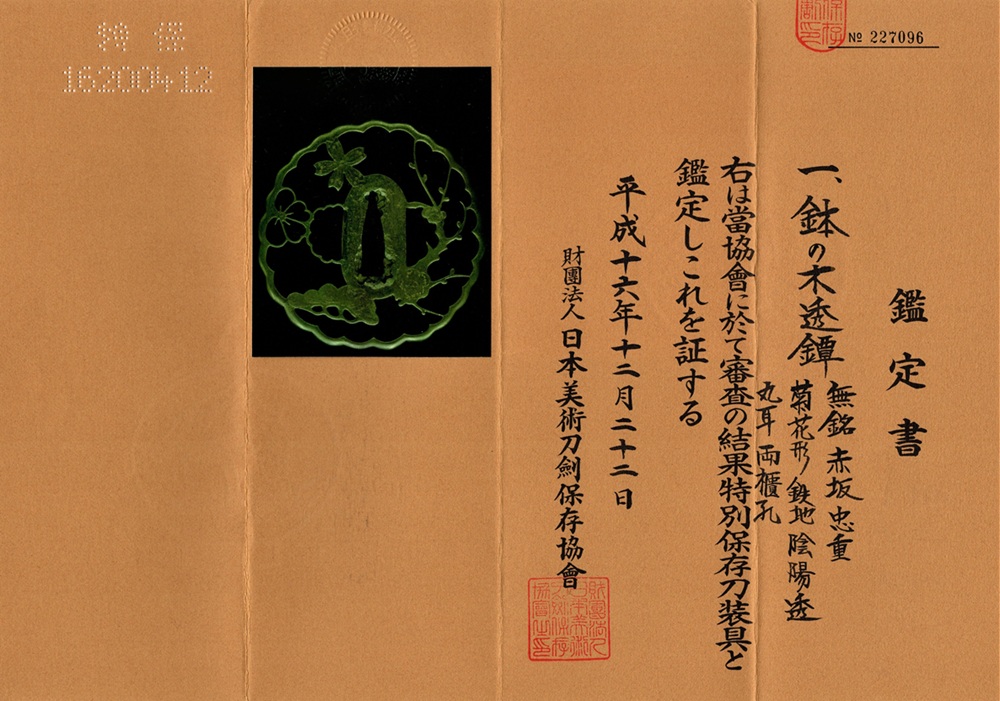| The theme of this tsuba depicts pine, plum, cherry blossom and snow, is "Potted Trees." Regent Hojo Tokiyori, disguised as a monk, was caught in a heavy snowfall and forced to seek lodging at the home of the impoverished samurai Sano Tsuneyo. He cut down his precious potted pine, plum, and cherry trees to keep the monk warm, and talked his aspirations for participating in Kamakura despite his poverty. Later, when Tsuneyo was summoned to Kamakura, he rushed to the monk, only to discover that the monk was none other than Tokiyori, and Tsuneyo was granted a fief by Tokiyori. This is a Noh play praising the loyalty of samurai. The hitsu-ana hole in this tsuba resemble snow circles. While there is a similar "Potted Trees" theme in Higo, the Akasaka is more elaborate and refined. Furthermore, compared to the Akasaka soke, the size is slightly larger and thicker, it has been attributedt to Tadashige [忠重], a branch of the Akasaka school. Tadashige was the younger brother of the fifth generation of the Akasaka soke, Tadatoki [忠時] (the second Tadatoki). He was an official craftsman for the Tosa domain, lived in Kyobashi, Edo, and left behind the work of tsuba in 1816, at the age of 87. A dignified tsuba. It has Passed the Tokubetsu Hozon Tosogu shinsa in 2004. |

